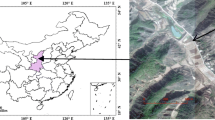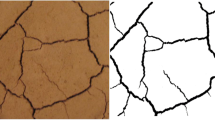Abstract
China has a large area of inland saline-alkali land, equivalent to 40% of the total cultivated land in the country. The principal features of these lands are high salt content, high pH, and poor soil structure with low water infiltration and poor drainage. These conditions effectively prevent the exploitation of such land for agriculture. In this study, we have compared 17 soil conditioning agents for their abilities to promote seed germination and growth under both laboratory and field conditions. One of these, Hydrolyzed Polymaleic Anhydride (HPMA), was identified as a highly effective agent for soil improvement. Laboratory germination experiments and laboratory and field cultivation of a variety of plants both showed that addition of HPMA could significantly increase the germination percentage and plant growth rate. Distinct from other Ca-carrier agents such as gypsum, HPMA increases the dissolution of CaCO3, which is abundant in the calcareous saline-alkali soils. This allows Ca2+ in soil solution to displace the over-abundant Na+ in the soil colloids. This process greatly improves soil properties such as the bulk density, which decreased, and the capillary soil rise height of water and soil water infiltration rate, which increased. Direct SEM and AFM imagery showed flocculent soil precipitation (soil aggregates) after HPMA addition, and a looser structure of those aggregates. The addition of HPMA also reduced the soil pH and EC. These changes in soil chemical and physical properties are a likely explanation for the soil improvement effected by HPMA. The high content of insoluble CaCO3 in saline-alkali land such as that in northeastern China (up to 13%) favors the further exploration of HPMA as an ameliorative agent.



Similar content being viewed by others
Abbreviations
- HPMA:
-
Hydrolyzed polymaleic anhydride
- PAA:
-
Polyacrylic acid
- T225:
-
Acrylic acid-2-hydroxypropyl acrylate copolymer
- AA/AMPS:
-
Acrylic acid-2-acrylamido-2-methylpropane sulfonic acid copolymer
- MA-AA:
-
Copolymer of maleic and acylic acid
- ATMP:
-
Amino trimethylene phosphonic acid
- BHMTPMPA:
-
Bis (hexamethylene triamine penta (methylene phosphonic acid)
- HEDP:
-
1-hydroxy ethylidene-1,1-diphosphonic acid
- PAPEMP:
-
Polyamino polyether methylene phosphonae
- EDTA:
-
Ethylenediaminetetraacetic acid
- CA:
-
Citric acid
- CC:
-
Citric calcium
- NTA:
-
Nitrilotriacetic acid
- SOM:
-
Soil organic matter
- EC:
-
Electrical conductivity
- ESP:
-
Exchangeable sodium percentage
- CEC:
-
Cation exchange capacity
References
Abrol IP, Yadav JS P, Massoud FI (1988) Salt-affected soils and their management. FAO Soils Bulletin 39, Food and Agriculture Organization of the United Nations, Rome
Ahmad N, Qureshi RH, Qadir M (1990) Amelioration of a calcareous saline-sodic soil by gypsum and forage plants. Land Degrad Dev 2:277–284
Amezketa E, Aragues R, Gazol R (2005) Efficiency of sulfuric acid, mined gypsum, and two gypsum by-products in soil crusting prevention and sodic soil reclamation. Agron J 97:983–989
Bouranis DL (1998) Designing synthetic soil conditioners via postpolymerization reactions. In: Wallace A, Terry RE (eds) Handbook of soil conditioners: substances that enhance the physical properties of soil. Dekker, New York, pp 333–362
Citeau L, Gaboriaud F, Elsass F, Thomas F, Lamy I (2006) Investigation of physico-chemical features of soil colloidal suspensions. Colloids Surf A: Physicochem Eng Aspects 287:94–105
Fu PY (1995) Clavis plantarum Chinae boreali-orientalis (2ed). Science, Beijing (In Chinese)
Gerin PA, Dufrene YF (2003) Native surface structure of natural soil particles determined by combining atomic force microscopy and X-ray photoelectron spectroscopy. Colloids Surf B Biointerfaces 28:295–305
He HS, Wang WJ, Zhu H, Zu YG, Zhang ZH, Guan Y, Xu HN, Yu XY (2008) Influences on the seed germination and growth with addition of kriliums in saline-alkali soil. Acta Ecol Sinica 28:5338–5346, in Chinese
HLJTR (Soil management bureau and soil census office of Heilongjiang Province, PR China) (1993) Soil of Heilongjiang Province. China Agriculture, Beijing, In Chinese
Lao JC (1988) Agricultural chemical methods for soil analysis. China Agricultural, Beijing (in Chinese)
Levy GY, Ben-Hur M (1998) Some uses of water-soluble polymers in soil. In: Wallace A, Terry RE (eds) Handbook of soil conditioners: substances that enhance the physical properties of soil. Dekker, New York, pp 399–428
Li FH (2006) Physics and chemistry of soil. Chemistry and Industry, Beijing (in Chinese)
Li X, Wang Z, Song K, Zhang B, Liu D, Guo Z (2007) Assessment for salinized wasteland expansion and land use change using GIS and remote sensing in the west part of Northeast China. Environ Monit Assess 131:421–437
Lin NF, Tang J (2003) Quaternary environmental evolution and desertification in north China. J Jilin Univ (Earth Sci Edn) 33:183–191, in Chinese
Liu SK, Zhang XX, Jin ZZ, Takano T (2006) Color atlas of plants grown in saline-alkali land in NE China. Northeast Forestry University Press, Harbin (In Chinese)
Liu XY (1982) Methods for soil physics and soil improvement. Science and Technology Press of Shanghai, Shanghai (in Chinese)
Liu ZG, Zu YG, Meng R H, Wang WJ, Yu XY (2010) Study on the water-soluble colloids in the saline-alkali soils in ZhaoDong, northeast of China. Submitted to Geoderma
Long MJ, Zheng FS (2000) Review on the study of polymer soil amendments. Chin J Soil Sci 5:199–202 (in Chinese)
Nabholz JW, Miller P, Zeeman M (1993) Environmental risk assessment of new chemicals under the toxic substances control act (TSCA) section five. In: Landis WG, Hughes JS, Lewis MA (eds) Environmental toxicology and risk assessment, ASTM STP1179. American Society for Testing and Materials, Philadelphia, pp 40–55
Nelson SD (1998) Krilium: the famous soil conditioner of the 1950s. In: Wallace A, Terry RE (eds) Handbook of soil conditioners: substances that enhance the physical properties of soil. Dekker, New York, pp 385–398
Quastel JH (1953) ‘Krilium’ and synthetic soil conditioners. Nature 171:7–10
Sharma P, Swarup A (1997) Comparison of pyrites varying in water-soluble sulfur with gypsum for the reclamation of alkali soils under a rice-wheat rotation. Biol Fertil Soils 24:96–101
Sun ZY, Liu J, Zhao LJ (2006) Saline-alkali land greening techniques. China Forestry Publishing House, Beijing (In Chinese)
Tang Z, Lei T, Yu J, Shainberg I, Mamedov AI, Ben-Hur M, Levy GJ (2006) Run off and interrill erosion in sodic soils treated with dry PAM and phosphogypsum. Soil Sci Soc Am J 70:679–690
Wallace A, Terry RE (1998) Handbook of soil conditioners: substances that enhance the physical properties of soil. Dekker, New York
Wallace A (1998) Some living plants and some additional products useful as soil conditioners and in various technologies. In: Wallace A, Terry RE (eds) Handbook of soil conditioners: substances that enhance the physical properties of soil. Dekker, New York, pp 463–510
Wang ZQ (1993) Salt-affected soils in China. Science, Beijing (in Chinese)
Wang WJ, Liu W, Sun W, Zu YG, Cui S (2008) Influences of forest floor cleaning on the soil respiration and soil physical properties of a larch plantation. Acta Ecol Sinica 28:4750–4756 (in Chinese)
Wang WJ, Guan Y, Zu YG, Zhao XH, Yang L, Xu HN, Yu XY (2009a) The dynamics of soil alkali-salinity and growth status of several herbal plants after krilium addition in heavy soda saline-alkali soil in field. Acta Ecol Sinica 29:2835–2844 (in Chinese)
Wang WJ, He HS, Zu YG, Zhao XH, Yang L, Zhu L, Guan Y, Xu HN, Yu XY (2009b) The dynamics of soil alkali-salinity and growth status of several herbal plants after krilium addition in heavy soda saline-alkali soil in field. Acta Ecol Sinica 29:2272–2278 (in Chinese)
Wild A (2003) Soils, land and food: managing the land during the twenty-first century. Cambridge University Press, Cambridge
Yang GT, Wang HY (2005) Study on the regulation function of woody vinegars for plant growth. Northeast Forestry University Press, Harbin (in Chinese)
Yang JH, Guo JT, Jiang S, Duan Z (2003) Study on the effect of microwave processing on the germination characteristics and salinity resistance of the Chinese cabbage seed. J Microwaves 19:83–86
Yi YL (2009) Methods for soil physics studies. Peking University Press, Beijing (in Chinese)
Zahow MF, Amrhein C (1992) Reclamation of a saline sodic soil using synthetic polymers and gypsum. Soil Sci Soc Am J 56:1257–1260
Zia MH, Saifullah SM, Ghafoor A, Murtaza G (2007) Effectiveness of sulphuric acid and gypsum for the reclamation of a calcareous saline-alkali soil under four crop rotations. J Agron Crop Sci 193:262–269
Acknowledgement
This research was supported by the Ministry of Science and Technology (2006BAD03A0306), Nature Science Foundation of China (40873063), China Postdoctoral Foundation (20080430126) and basic research fund from Northeast Forestry University (DL09CA17). The authors are so appreciating the great efforts from the section editor, Prof. John Cheeseman and his advice and suggestion have largely improved the scientific level of this manuscript.
Author information
Authors and Affiliations
Corresponding author
Additional information
Responsible Editor: John McPherson Cheeseman.
Rights and permissions
About this article
Cite this article
Wang, WJ., He, HS., Zu, YG. et al. Addition of HPMA affects seed germination, plant growth and properties of heavy saline-alkali soil in northeastern China: comparison with other agents and determination of the mechanism. Plant Soil 339, 177–191 (2011). https://doi.org/10.1007/s11104-010-0565-1
Received:
Accepted:
Published:
Issue Date:
DOI: https://doi.org/10.1007/s11104-010-0565-1




